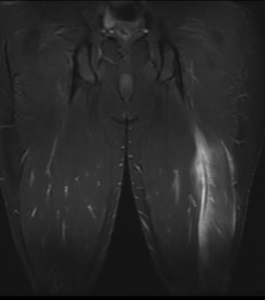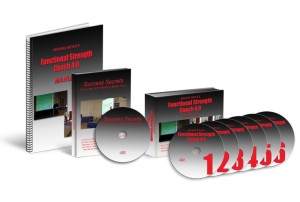Radial tunnel syndrome is rare, it is challenging to differentially diagnose and can be a monster to manage. If you have a recalcitrant case of tennis elbow then this post will interest you! This article discusses the best available evidence for assessment and management of radial tunnel syndrome.
Have you ever heard of snapping scapula syndrome? If you answered no, I would not be too surprised. Whilst this condition is more common than you may think, it seems to be underappreciated within the physiotherapy. Thus, this article will discuss snapping scapula syndrome including what it is, why it occurs and what you need to do to fix it!
Ankle sprains are very common in the practice of sports physiotherapy. However, unfortunately many patients go on to have long term problems. This has lead to the development of many proposed treatments and rehabilitation programs. This article will discuss new research into the use of manual therapy techniques combined with exercises for the rehabilitation of inversion ankle sprains.
Many sports physiotherapists rehabilitate hamstring injuries on a daily basis. Unfortunately, they can be very tricky to fully and definitively rehabilitate fully and reported re-injury rates are as high as 50%. This statistic inevitably leads to the people screaming it is due to inadequate rehabilitation techniques, which may be correct. Accordingly, this article will discuss new research which compares the clinical and morphological effects of 2 effective rehabilitation programs for hamstring injuries.
Aerobic exercise, particularly in the form of running, has become more popular with the general population over the last few decades. Unfortunately, this increase in healthy exercise may come at a cost with up to 80% of runners reporting a lower limb injury. These trends mean that preventing running injuries is gaining significant importance in the world of sports medicine. One touted intervention that is currently in vogue is adapting the runner’s biomechanics to a forefoot strike pattern or barefoot running technique…
Introduction Hamstring strains are commonly assessed and treated in the world of sports physiotherapy. They represent the most common injury in a number of sports, including AFL and soccer, accounting for up to 12-16% of injuries (Hawkins et al., 2001; Warren et al., 2010). Dvorak and Astrid (2000) suggested that hamstring injuries occur at an […]
How regularly do you treat injured athletes with reduced lower limb flexibility? The answer from many of you would likely be all day long! It has been well established that athletes with reduced lower limb flexibility are at greater risk of injury (Murphy et al., 2003). Thus, it would be logical that a program of regular stretching, which has been shown to improve lower limb flexibility (Harvey et al., 2002), would reduce this injury risk… wouldn’t it? Well, not conclusively…
It is no secret that sports physiotherapists and physical therapists across the world commonly assess and treat knee injuries. Of these injuries, patellofemoral pain is exceptionally common, accounting for 25% of all sports related knee injuries (Fredericson & Yoon, 2006). In fact, patellofemoral pain syndrome is the most commonly reported injury sustained by runners (Taunton et al., 2002). As many of the aetiological factors that contribute to patellofemoral pain syndrome have not been clearly identified, decision making regarding appropriate rehabilitation and treatment can often be challenging. This article will discuss the use of isometric adduction during closed kinetic chain lower limb exercises to facilitate vastus medialis obliquus (VMO) activation.
You know what I’ve learned after talking to incredible sports physiotherapists and sports medicine professionals, attending numerous professional development courses, conferences and seminars and reading many books: there is so much that I don’t know. And I say that without reservation, as I know that it is impossible to stay at the forefront of current practice and research in all fields of sports medicine. There is just not enough hours in the day. Fortunately, I also know not to pass up opportunities to learn from experts in a given field. Thus, I would like to introduce you to Michael Boyle.
If you work with athletes who train hard, as many sports physiotherapists do, then you will have encountered exercise induced muscle damage or delayed onset muscle soreness (DOMS). It is also likely that the suffering athlete has come to you and said “I’m so sore from that workout – can you do anything?”. There are many widely used post workout and recovery strategies that are touted as effective at enhancing an athletes recovery from high intensity exercise. However, as is frequently the norm in sports medicine, the evidence for their use is mostly anecdotal rather than based on high quality clinical trials. Fortunately, a new review recently published discusses the effectiveness of physiotherapeutic interventions following high intensity exercise.
In the past this site has featured some lighter, colloquial blog posts. These articles discuss issues related to the greater physiotherapy community. Thus, I present a few mantras I have heard, adapted or made up for the physios to live by in the coming year.
Radial tunnel syndrome is rare, it is challenging to differentially diagnose and can be a monster to manage. If you have a recalcitrant case of tennis elbow then this post will interest you! This article discusses the best available evidence for assessment and management of radial tunnel syndrome.








